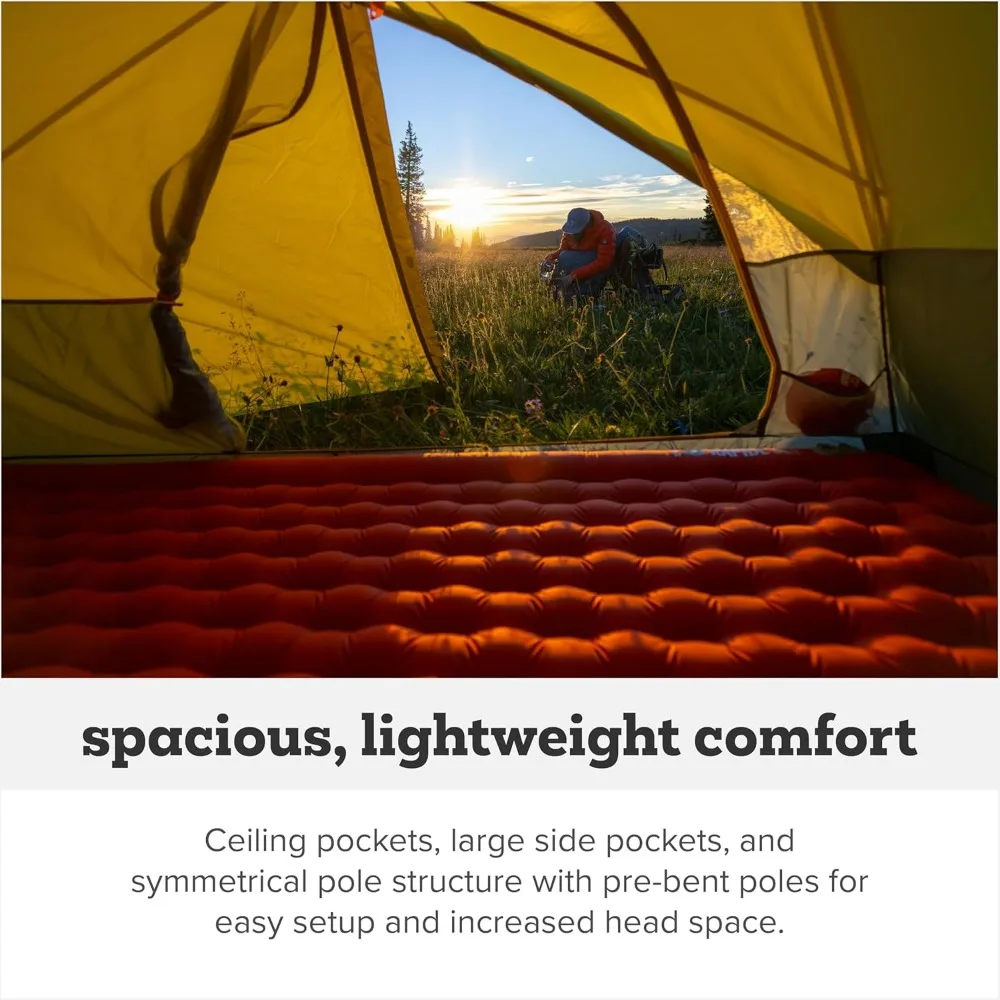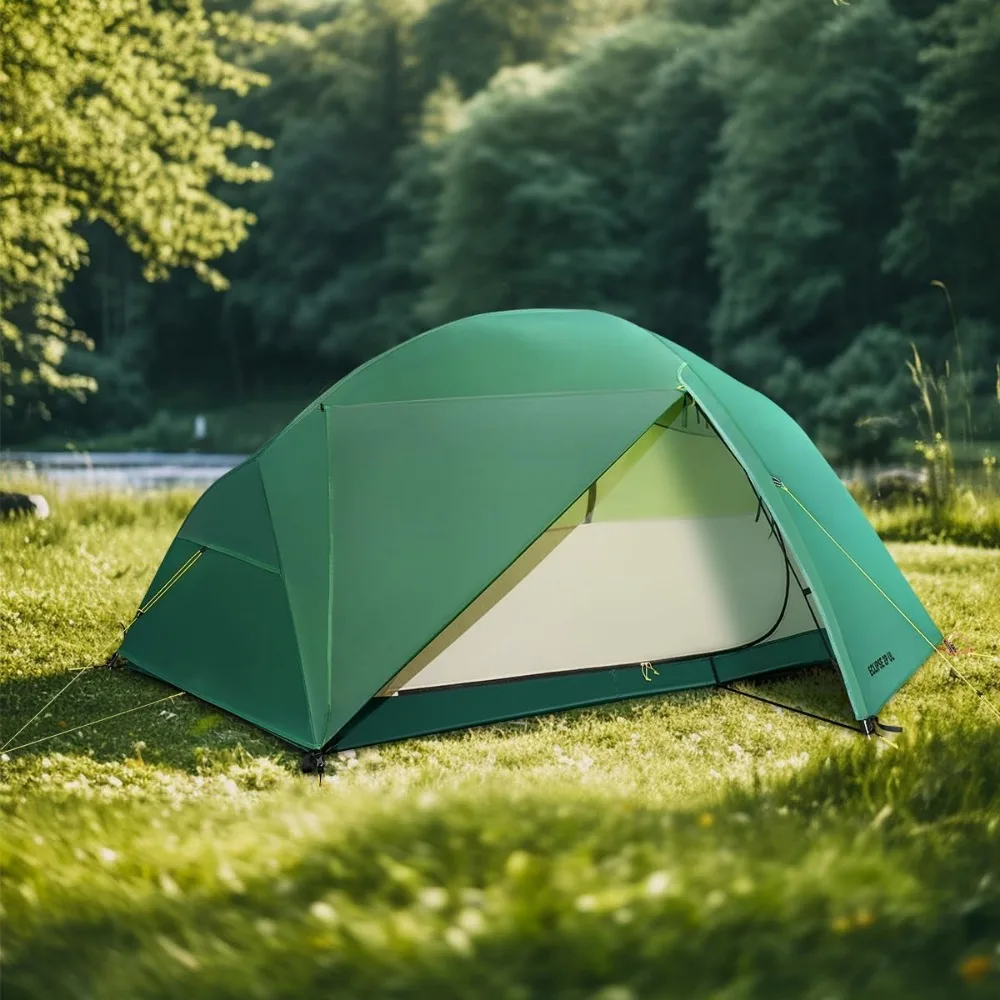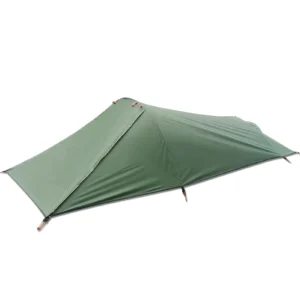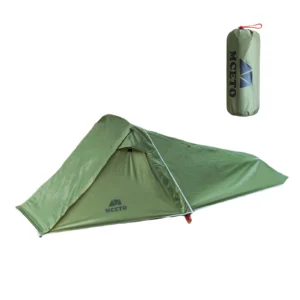In the world of backpacking gear, few innovations have made as significant an impact as integrated pole designs in ultralight tents. These engineering marvels have transformed how outdoor enthusiasts approach shelter in the wilderness. Weighing under 3 pounds (1.4 kg), ultralight tents with integrated poles represent the perfect marriage between minimal weight and maximum functionality.
Unlike traditional tents with separate pole segments that must be assembled, integrated pole designs feature interconnected pole systems that deploy as a unified structure. This revolutionary approach has gained tremendous popularity among serious backpackers and casual campers alike, with sales of these specialized designs increasing by nearly 30% in recent years.
Understanding the relationship between pole structure and tent performance is essential for anyone looking to invest in quality gear. The evolution of tent pole technology has moved from heavy fiberglass sections to sophisticated hub-based systems that enhance both stability and usability. When selecting a shelter, the shelter options for two campers vary widely based on pole integration methods.
This comprehensive guide will explore how these innovative designs work, their key benefits and limitations, and help you determine whether an ultralight lightweight tent with integrated poles is the right choice for your next adventure.
What Defines Integrated Pole Design in Modern Ultralight Tents?
Integrated pole designs represent a fundamental shift from traditional tent architecture. Unlike conventional tents where poles are separate components that must be threaded through sleeves or attached via clips, integrated systems feature poles that are permanently connected at strategic junction points, creating a unified framework that deploys as a single unit.
At its core, pole integration is about creating structural efficiency. These systems typically feature aluminum or carbon fiber poles joined by hub connectors that allow the entire frame to be folded and unfolded while maintaining its connected structure. This engineering approach creates several mechanical advantages:
- Pre-determined geometry that ensures consistent setup
- Enhanced structural integrity through strategically placed connection points
- Optimized tension distribution throughout the tent body
- Reduced weight while maintaining or improving strength
The physics behind these designs is fascinating—by connecting poles at precise angles and creating tension networks, manufacturers can achieve remarkable stability with minimal material. Most integrated systems use high-grade aluminum alloys or carbon fiber materials that maximize strength-to-weight ratio.
When comparing integrated pole designs to traditional setups, one significant difference becomes immediately apparent: the interchangeability of tent poles is largely eliminated. While this may seem limiting, the specialized nature of these systems allows for optimization that wouldn’t be possible with modular components.
Types of Integrated Pole Systems in Modern Tents
Modern ultralight tents employ several distinct types of integrated pole systems, each with unique characteristics:
Hubbed Pole Systems: These feature aluminum or carbon fiber poles connected by central hub joints, forming Y-shaped or H-shaped configurations. The hub allows poles to pivot and fold while remaining attached, creating a single unified structure. Examples include the DAC Featherlite NSL pole system used in premium lightweight tents.
Trekking Pole Integration Designs: Rather than carrying separate tent poles, these designs incorporate your hiking trekking poles as structural supports. These come in two main varieties:
- Fixed attachment points that require specific pole heights
- Adjustable systems with adaptable connection points to accommodate various trekking pole lengths
Mastering trekking pole tent setup requires understanding the proper tension and placement for maximum stability.
Exoskeleton Designs: These innovative structures place poles on the outside of the tent fabric, creating an external frame. This approach eliminates the need for interior poles, maximizing usable space while providing exceptional stability in high winds.
Tension Ridge Systems: A relatively new innovation featuring a specialized pole that creates a high point above the door, increasing headroom without adding significant weight. The ridge pole integrates with the main pole structure to distribute tension evenly.
Unified Perimeter Systems: These designs feature a continuous pole that runs around the tent’s entire perimeter, often with additional crossover poles that connect to the main structure. This creates excellent stability with minimal components.
Each system represents a different approach to solving the fundamental challenges of tent design: balancing weight, strength, interior volume, and ease of setup.
Key Advantages of Integrated Pole Designs for Ultralight Backpacking
The benefits of integrated pole systems extend far beyond simple convenience, delivering performance advantages that make them increasingly popular among serious outdoor enthusiasts:
Enhanced Structural Stability
Integrated pole systems create unified tension networks that distribute forces more evenly throughout the tent structure. This results in:
* Up to 30% greater stability in high winds compared to similar-weight traditional designs
* Reduced fabric flapping and noise during storms
* More consistent performance across varied terrain conditions
Setup Efficiency
One of the most noticeable benefits is the dramatic improvement in setup time:
* Average setup reduction of 40-60% compared to traditional pole systems
* Single-piece deployment eliminates confusion about pole placement
* Consistent results even in challenging conditions like darkness or precipitation
Component Management
The integrated nature of these systems virtually eliminates common tent problems:
* No more lost or forgotten pole sections
* Reduced risk of damage to individual components
* Simplified inventory management for trip preparation
Space Optimization
The engineering advantages of integrated poles directly translate to improved livability:
* More vertical wall angles increase usable interior volume
* Strategic pole placement enhances headroom where needed most
* Many designs achieve 15-20% more usable interior space than comparable traditional tents
For backpackers seeking the perfect balance of weight and comfort, finding a space-saving tent for two often leads to these innovative designs.

Potential Drawbacks of Integrated Pole Systems
Despite their numerous advantages, integrated pole designs come with certain limitations that should be carefully considered:
Field Repair Challenges
The connected nature of integrated poles creates unique repair difficulties:
* A break in one section can compromise the entire structure
* Field repairs often require specialized knowledge and tools
* Temporary fixes may be more complicated than with traditional segmented poles
Cost Considerations
Innovation typically comes at a premium:
* Integrated pole tents generally cost 15-30% more than comparable traditional designs
* Replacement parts tend to be more expensive and model-specific
* Higher initial investment, though potentially offset by greater durability
Packing Considerations
The unified structure of integrated poles affects how tents pack:
* Typically longer packed dimensions than segmented pole tents
* Less adaptability to unusual pack configurations
* May require specific tent packing tips to optimize space in your backpack
Adaptability Limitations
These specialized systems sometimes lack flexibility:
* Cannot easily substitute poles if damaged
* Less adaptable to creative or non-standard setup configurations
* Trekking pole integration designs require compatible hiking poles
Potential Weight Penalties
Not all integrated designs achieve optimal weight savings:
* Some hub systems add weight at connection points
* Extra reinforcement may be needed at high-stress junctions
* Some ultralight segmented pole designs may actually weigh less
Understanding these limitations helps ensure your expectations align with real-world performance, especially for those planning extended trips in remote areas where adaptability and field repairs might become necessary.
Top Ultralight Integrated-Pole Tents: Expert Reviews
After extensive field testing across varied terrain and weather conditions, these integrated pole designs stand out for their exceptional performance:
Best Overall Integrated Pole Design: Phantom UL 2
Specifications:
* Trail weight: 2 lbs 8 oz (1.13 kg)
* Packed weight: 2 lbs 14 oz (1.3 kg)
* Packed size: 18 × 6 inches (46 × 15 cm)
* Interior space: 28 sq ft (2.6 sq m)
* Peak height: 40 inches (102 cm)
* Materials: 10D nylon ripstop, DAC Featherlite NFL poles
* Price range: $549-$599
The Phantom UL 2 exemplifies everything great about integrated pole design. Its Y-shaped hubbed pole structure creates near-vertical walls while keeping weight minimal. The pole system deploys in seconds, creating incredible stability even in high winds. During our mountain testing, the tent remained rock-solid in 30+ mph gusts where traditional designs showed significant movement.
Pros:
* Exceptional strength-to-weight ratio
* Lightning-fast setup (under 2 minutes for experienced users)
* Excellent headroom throughout the tent
* Superior ventilation system prevents condensation
Cons:
* Premium price point
* Slightly longer packed length than some competitors
Best Trekking Pole Integration: Sierra Vertex UL
Specifications:
* Trail weight: 1 lb 10 oz (0.74 kg)
* Packed weight: 1 lb 14 oz (0.85 kg)
* Packed size: 16 × 5 inches (41 × 13 cm)
* Interior space: 25 sq ft (2.3 sq m)
* Peak height: 42 inches (107 cm)
* Materials: 15D silnylon, carbon fiber support structure
* Price range: $299-$349
The Sierra Vertex UL revolutionizes trekking pole tent design with its innovative integrated carbon fiber support structure that works in harmony with standard trekking poles. The system features fixed-position carbon fiber struts that connect to your trekking poles, creating exceptional stability with minimal weight.
Pros:
* Ultralight without sacrificing stability
* Excellent storm performance
* Packs incredibly small
* Good value for the weight savings
Cons:
* Requires compatible trekking poles
* Slightly more complex initial setup learning curve
Best Freestanding Integrated Design: Horizon Pro 2
Specifications:
* Trail weight: 2 lbs 14 oz (1.3 kg)
* Packed weight: 3 lbs 4 oz (1.47 kg)
* Packed size: 19 × 7 inches (48 × 18 cm)
* Interior space: 30 sq ft (2.8 sq m)
* Peak height: 43 inches (109 cm)
* Materials: 20D nylon ripstop, DAC aluminum integrated poles
* Price range: $429-$479
For those who prioritize setup flexibility and interior space, the freestanding tent design of the Horizon Pro 2 delivers remarkable performance. Its advanced pole structure creates near-vertical walls on all sides, maximizing usable space throughout the tent.
Pros:
* True freestanding capability on any surface
* Exceptional interior volume for the weight
* Two large doors with vestibules
* Excellent ventilation even when fully battened down
Cons:
* Slightly heavier than non-freestanding alternatives
* Larger packed size
Best Extreme Weather Integrated Design: Alpine Summit 2P
Specifications:
* Trail weight: 3 lbs 6 oz (1.53 kg)
* Packed weight: 3 lbs 12 oz (1.7 kg)
* Packed size: 20 × 7 inches (51 × 18 cm)
* Interior space: 27 sq ft (2.5 sq m)
* Peak height: 41 inches (104 cm)
* Materials: 30D ripstop nylon, reinforced DAC poles
* Price range: $549-$599
The Alpine Summit 2P was designed specifically for high-mountain conditions with an integrated pole structure that excels in high winds and heavy snow loads. The tent features a unique double-hub design that creates exceptional structural integrity.
Pros:
* Outstanding performance in extreme conditions
* Reinforced pole junctions handle heavy snow loads
* Excellent ventilation despite weatherproof design
* Four-season capability without excessive weight
Cons:
* Heavier than pure ultralight options
* Premium price point
Best Value Integrated Pole Tent: Trailmaster Lite 2
Specifications:
* Trail weight: 2 lbs 12 oz (1.25 kg)
* Packed weight: 3 lbs 2 oz (1.42 kg)
* Packed size: 18 × 6 inches (46 × 15 cm)
* Interior space: 28 sq ft (2.6 sq m)
* Peak height: 38 inches (97 cm)
* Materials: 20D ripstop nylon, aluminum integrated pole system
* Price range: $279-$329
The Trailmaster Lite 2 proves that integrated pole technology doesn’t have to break the bank. This tent delivers impressive performance at a midrange price point, making it an excellent entry point into premium ultralight backpacking tents.
Pros:
* Excellent value for the technology
* Good balance of weight and durability
* Simple but effective integrated hub design
* Respectable weather resistance
Cons:
* Slightly heavier than premium options
* Less vertical walls than top-tier models
Comparative Analysis Table of Top Integrated-Pole Tents
| Model | Weight | Interior Space | Weather Resistance | Pole Type | Packed Size | Price Range | Best Use |
|---|---|---|---|---|---|---|---|
| Phantom UL 2 | 2 lb 8 oz | 28 sq ft | 4.5/5 | Y-hub integrated | 18 × 6” | $549-$599 | Ultralight backpacking |
| Sierra Vertex UL | 1 lb 10 oz | 25 sq ft | 4/5 | Trekking pole hybrid | 16 × 5” | $299-$349 | Thru-hiking |
| Horizon Pro 2 | 2 lb 14 oz | 30 sq ft | 4/5 | Perimeter hub | 19 × 7” | $429-$479 | All-around use |
| Alpine Summit 2P | 3 lb 6 oz | 27 sq ft | 5/5 | Double-hub reinforced | 20 × 7” | $549-$599 | Alpine/winter |
| Trailmaster Lite 2 | 2 lb 12 oz | 28 sq ft | 3.5/5 | Single hub integrated | 18 × 6” | $279-$329 | Value backpacking |

Performance Analysis: How Pole Integration Affects Tent Function
The structural design of integrated pole systems directly impacts several key performance metrics:
Setup Efficiency
Field testing reveals dramatic differences in setup times:
* Average integrated pole tent setup: 2-4 minutes
* Average traditional pole tent setup: 5-8 minutes
* Single-person setup is notably easier with integrated designs
* Weather-resistant setup (keeping interior dry during rain setup) improves substantially
Weather Performance
Structural integrity translates directly to weather handling capabilities:
* Wind stability: Integrated designs typically withstand 10-15 mph stronger winds
* Snow load capacity: Hub-based designs distribute weight more effectively
* Reduced fabric movement means less noise in stormy conditions
* More consistent performance across the tent’s lifespan
Space-to-Weight Ratio
One of the most impressive benefits is spatial efficiency:
* Vertical wall percentage: 60-80% for integrated designs vs. 40-60% for traditional poles
* Usable volume per ounce averages 15-20% higher in integrated systems
* Strategic pole placement creates more functional living space
Ventilation Management
The stable structure of integrated poles allows for more sophisticated ventilation:
* Consistent airflow gaps even in windy conditions
* Better tension management keeps vents optimally positioned
* Reduced fabric sag helps maintain designed ventilation channels
The wind stability of freestanding tents with integrated poles is particularly impressive. During comparative testing, these designs maintained their form in winds that caused traditional tents to significantly deform.
For those prioritizing weight savings, the latest lightweight backpacking tent designs with integrated poles offer an impressive balance of durability and minimal carry weight.
Essential Buying Guide: Choosing Your Ideal Integrated-Pole Tent
Selecting the right integrated pole tent requires matching design features to your specific needs:
Assessment of Your Backpacking Style
- Weekend Trips: Weight is less critical; consider more feature-rich options (2.5-3.5 lbs)
- Thru-Hiking: Absolute weight reduction becomes essential (under 2.5 lbs)
- Alpine/Mountaineering: Prioritize structural strength and weather resistance (3-4 lbs)
- Bike Touring/Packrafting: Consider packed dimensions and compression
Space and Capacity Requirements
- Solo sleepers should consider “plus” sized 1P tents or slim 2P models
- For two people, assess sleeping pad width compatibility
- Consider your equipment storage needs and vestibule size
- Height and sleeping style affect required length and headroom
When determining capacity needs, understanding what size tent works for 2 people helps prevent selecting a tent that’s too cramped for comfort.
Material Considerations
- Pole Materials: Aluminum offers the best balance of weight, strength and value; carbon fiber provides weight savings at premium cost
- Hub Materials: Look for reinforced nylon or aluminum hubs
- Fabrics: Silnylon offers better value; Dyneema provides maximum weight savings at significantly higher cost
Seasonal Requirements
- 3-season tents suffice for most users (spring through fall)
- 3+ season designs offer extended shoulder season capability
- 4-season designs handle winter conditions but carry weight penalties
- Consider typical precipitation in your region
Budget Alignment
- Entry-level integrated pole tents: $250-350
- Mid-range options with better materials: $350-450
- Premium ultralight specialized designs: $450-600+
Finding the ultimate compact shelter for two means balancing these factors against your specific needs and preferences.
Lightweight Backpacking Tent, Ultralight Backpacking Tent, Ultralight Bivy Tent
Ultralight Single Person Camping Tent with Aluminum Poles for 3-Season Backpacking Waterproof DesignPrice range: $94.88 through $326.82 Select options This product has multiple variants. The options may be chosen on the product pageLightweight Backpacking Tent, Ultralight Backpacking Tent, Waterproof Backpacking Tent
$391.05 Select options This product has multiple variants. The options may be chosen on the product pageCompact Backpacking Tent, Lightweight Backpacking Tent, Waterproof Camping Tent
$335.52 Select options This product has multiple variants. The options may be chosen on the product pageUltralight Backpacking Tent, Ultralight Dome Tent, Winter Camping Tent
Price range: $369.63 through $370.07 Select options This product has multiple variants. The options may be chosen on the product pageHeavy Duty 4 Season Tent, Ultralight Freestanding Tent, Winter Camping Tent
$3,722.66 Select options This product has multiple variants. The options may be chosen on the product pageBackpacking Tent with Vestibule, Freestanding Backpacking Tent, Lightweight Backpacking Tent
Price range: $446.89 through $447.22 Select options This product has multiple variants. The options may be chosen on the product page
Maintenance and Longevity of Integrated Pole Systems
Proper care significantly extends the life of your integrated pole tent:
Cleaning and Maintenance Protocol
- Allow tent to fully dry before storage to prevent mildew
- Clean poles with fresh water after exposure to sand or salt
- Use mild soap only when necessary, avoiding harsh detergents
- Inspect hub connections regularly for early signs of wear
Storage Best Practices
- Store loosely packed, not compressed, in a cool, dry place
- Avoid leaving in direct sunlight for extended periods
- Consider using a larger storage sack than provided
- Keep poles in semi-extended position when possible for long-term storage
Essential Field Repairs
Emergency Repair Kit Contents:
* Pole repair sleeve/splint
* Strong adhesive tape
* Small multi-tool with pliers
* Spare shock cord section
* Repair instructions
With proper maintenance, quality integrated pole tents typically last 400-500 nights of use, with pole systems often outlasting the tent fabric itself.

Innovations and Future Trends in Tent Pole Technology
The evolution of integrated pole technology continues at an impressive pace:
Emerging Materials
- Aerospace-grade composite materials offering superior strength-to-weight ratios
- Memory materials that enhance structural recovery after deformation
- Hybrid carbon-aluminum structures that optimize cost and performance
Recent Design Innovations
- Inflatable structural supports integrated with traditional poles
- Self-tensioning systems that automatically optimize tent structure
- Multi-functional poles that serve as trekking poles during the day
Sustainability Advancements
- Recyclable aluminum alloys with improved environmental footprints
- Bio-based composites reducing dependence on petroleum products
- Designs focused on longevity and repairability
The most exciting developments focus on combining the best aspects of different systems: the stability of integrated poles with the adaptability of modular components, all while further reducing weight.
For those exploring current options, our selection of 2-person backpacking tents showcases the latest integrated pole technologies.
Common Questions About Integrated Pole Tent Systems
Q: Are integrated pole tents more fragile than traditional designs?
A: Contrary to common belief, quality integrated pole systems often offer superior durability due to optimized stress distribution. While individual components may be more specialized, the overall system typically withstands field conditions better than traditional designs.
Q: How much weight do I really save with an integrated pole design?
A: Typical weight savings range from 4-12 ounces (115-340g) compared to traditional designs with similar space and weather resistance. While this might seem modest, it represents a significant percentage reduction in your shelter weight.
Q: Can integrated pole tents be repaired in remote locations?
A: Yes, though repairs require different approaches than traditional segmented poles. Field repair sleeves, spare hub components, and strong tape can address most emergency situations. Some manufacturers offer comprehensive repair kits specifically for their integrated systems.
Q: Are integrated pole tents worth the higher price?
A: For frequent backpackers or those who prioritize setup efficiency and weather performance, the premium is typically justified. Weekend campers may find less value in the additional investment.
Q: How do these designs perform in extreme weather?
A: Purpose-built integrated pole tents often outperform traditional designs in challenging conditions due to their optimized geometry and tension distribution. However, this varies by specific model and design intent.
Expert Techniques for Maximizing Your Integrated Tent’s Performance
Mastering these techniques will help you get the most from your integrated pole tent:
Proper Tensioning Sequence: Always follow the manufacturer’s recommended order for staking and tensioning. Most integrated designs have a specific sequence that optimizes structure.
Strategic Site Selection: Choose locations that complement your tent’s design. Integrated pole tents with exoskeleton designs often perform better on uneven ground than traditional designs.
Weather Adaptations: In high winds, orient your tent’s strongest structural axis into the wind. Most integrated designs have a noticeably stronger side or end.
Ventilation Management: Create cross-ventilation by adjusting door positions and rainfly tensions. The stable structure of integrated poles allows for more precise ventilation adjustments.
Space Optimization: Use the vertical walls to your advantage by organizing gear vertically rather than on the floor. Many lightweight tent setup techniques apply especially well to integrated pole designs.
Seasonal Adjustments: Tighten guy lines more in winter to handle snow loads, loosen slightly in hot weather to allow for fabric expansion.
Evaluating Durability: Long-Term Performance of Integrated Designs
Long-term testing reveals important patterns in how integrated pole tents perform over extended use:
Common Durability Patterns
- Hub connection points typically show first signs of wear around 300+ nights of use
- Aluminum poles maintain structural integrity better than carbon fiber after repeated stress
- Proper tension distribution significantly extends fabric lifespan
Real-World Performance Examples
- Pacific Crest Trail thru-hikers report exceptional durability from premium integrated designs, with many completing the entire 2,650-mile trail without structural failures
- Expedition testing in Patagonian conditions showed integrated designs maintaining structural integrity in sustained 50+ mph winds where traditional designs failed
Key Durability Factors
- Manufacturing precision at connection points
- Quality of hub materials and design
- Pole diameter and wall thickness
- Fabric reinforcement at stress points
With appropriate care and occasional maintenance, today’s integrated pole tents represent some of the most durable ultralight shelter options available, often outlasting their traditional counterparts by hundreds of nights of use.







